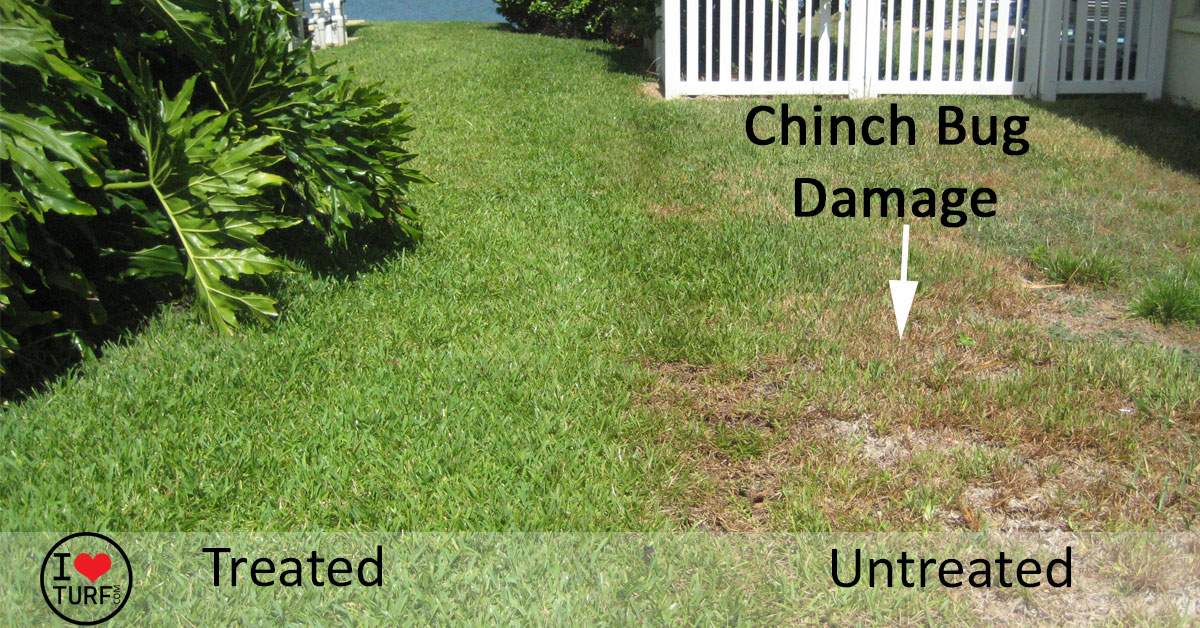
Chinch Bug Season – May - October
Chinch Bugs like it hot and dry. The hot dry spring in Pinellas is the beginning of the chinch bug season. The scattered thundershowers of summer will aid reproduction and populations explode. It is those exploding populations that can wipe out an entire lawn in a week.
Chinch Bugs Are Small
Chinch Bugs are small! They are about the size of a pinhead. When disturbed, they scramble for the nearest cover to hide. Their small size and shy nature make them hard to find in a lawn. But they are there – almost every St Augustine turfgrass lawn in Pinellas County has at least a few Chinch Bugs in or near the lawn. And when St Augustine weakens from water stress, the chinch bugs attack.
Not a Pest but a Predator
Chinch Bugs are not pests, they are predators. As a predator, their role is to remove weak grass and make room for more adapted weedy species. Chinch bugs will rarely attack healthy St Augustine grass. Chinch bugs see water-stressed St Augustine grass as weak and will attack it.
Chinch Bugs Kill St Augustine Grass
Chinch Bugs feed on the sap of St Augustine grass and inject a toxin that prevents the movement of water in the plant. This kills the grass plant. Chinch Bug damage is so complete and so fatal to St Augustine grass that there is no recovery – it is dead!
Chinch Bug Life Cycle
When chinch bugs attack weak grass, a firestorm of activity is started. First the weak water-stressed grass is attacked. As populations explode, healthy grass is attacked and injected with toxins creating even more weak grass. This cycle of feed, breed and attack expands exponentially and will not stop until the lawn is destroyed.
SWFWMD Causes Chinch Bugs
An obvious solution to chinch bugs is to prevent water stress. But that requires the freedom to water as often and as much as the rainfall and weather dictate. But SWFWMD has removed that freedom and required self-supplied irrigation systems only to be used on a certain day – regardless of when the lawn needs water. The consequences of water restrictions are more water-stressed St Augustine grass and more chinch bugs.
What to Look For
Chinch bug damage mimics heat and water stress. However, there are three distinct symptoms:
- Chinch bugs usually start along the edges. Edges are usually the first to water stress in a lawn. However, wherever you have water stress grass you will find chinch bugs.
- Incomplete Damage – the damage seems to be selective in contrast to water stress damage which is equal damage over the area. Look for islands of green isolated within the damaged area. This is because the Chinch bug will feed on the weak turf first and then attack the healthy turf.
- Yellow Leaves along the edges of the damage caused by the injection of the toxin. The feeding progresses from a central point and moves outward. The pattern will be dead grass –> yellow leaves on the edges -> healthy turf.
- The presence of Chinch Bugs – If you cannot find any Chinch Bugs then probably something else caused the damage. Yet finding the small shy bugs is difficult. Soap drenches or physically investigating the edges of undamaged turf is the best method to get a visual verification.
How to Control Chinch Bugs
Chinch Bug populations are easily reduced with modern insecticides. Since the Chinch bugs live in the base of the leaves, using a liquid insecticide is superior to granular insecticides. Since chinch bug damage is lethal, the lawn will not recover and will have to be replaced if attacked by chinch bugs. Therefore, preventive applications during peak seasons are better than curative applications. Preventative Insecticide applications every 30 to 60 days during the chinch bug season will protect your lawn.




